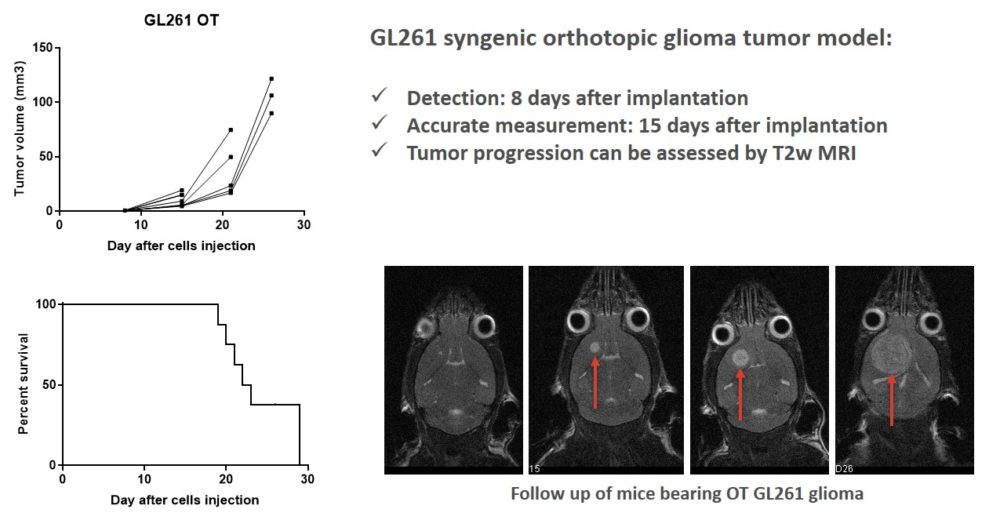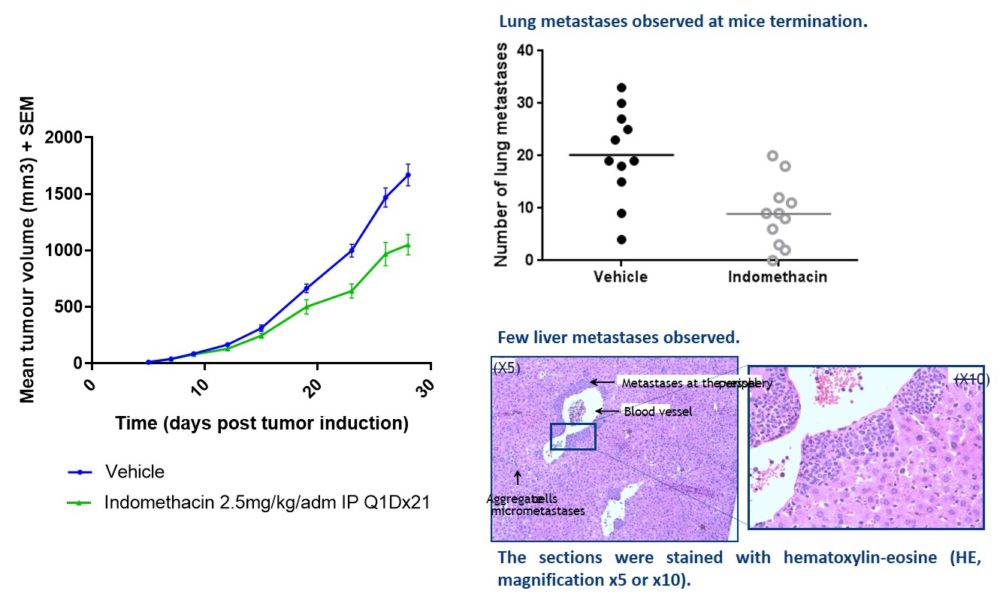


Preclinical orthotopic tumors model can better recapitulate the tumor microenvironment (TME)
While many CDX and PDX tumors models grow subcutaneously in mice, sometimes a tumor model requires a specific kind of tumor microenvironment that can only be well recapitulated in the stroma of the primary organ. For example, hepatocellular carcinoma (HCC) liver cancer growing in liver are very well vascularized in comparison with HCC tumors growing subcutaneously, which might affect drug exposure and assumptions about metabolites. HCC is therefore a tumor type likely to benefit from orthotopic modeling. Bladder tumors at a primary tumor site contact urine and are subject to mechanical stress in a way that subcutaneous tumors do not, so orthotopic modeling of bladder cancer might be beneficial beyond SC modeling as well.
Oncodesign Services can manage up to 80 animals/day in orthotopic surgery and about the same number for in vivo imaging timepoints. MRI is typically used to size tumors for randomization and sometimes to track tumor growth. Orthotopic modeling requires in vivo imaging. Oncodesign Services has numerous in vivo imaging platforms, including MRI, PET, PET/MRI, SPECT and optical imaging to monitor tumor volume and pharmacological biomarkers.
Orthotopic models list:
| Name | Organ | Histological Type | Host rodent species |
| SYNGENEIC | |||
| 4T1 | Breast | Carcinoma transitional | Balb/c Mouse |
| AY27 | Bladder | Carcinoma | F344 Ficher Rat |
| C6 | Brain | Glioma | Nude Rat |
| C6 | Brain | Glioma | Wistar Rat |
| CT26 | Colon | Carcinoma | Balb/c Mouse |
| EMT6 | Breast | Mammary Carcinoma | Balb/c Mouse |
| GS-9L | Brain | Gliosarcoma | F344 Ficher Rat |
| GV1A1 | Brain | Glioma | BDIX Rat |
| Hepa1-6 | Liver | Hepatocarcinoma | C57BI/6 Mouse |
| MBT-2 | Bladder | Carcinoma | C3H Mouse |
| MBT-II | Bladder | Tumor | Wistar Rat |
| NCTC 2472 | Bone | Sarcoma | C3H Mouse |
| R3327H | Prostate | Adenocarcinoma | Copenhagen Rat |
| Renca | Kidney | Carcinoma | Balb/c Mouse |
| HUMAN CDX | |||
| LS 174T | Colon | Colorectal Adenocarcinoma | Nude Rat |
| MDA-MB-175 | Breast | Adenocarcinoma | NOD SCID Mouse |
| NCI-H146 | Lung | carcinoma-SCLC | Nude Rat |
| NCI-H209 | Lung | Carcinoma SCLC | Nude Rat |
| NCI-H460 | Lung | Carcinoma-NSCLC | Swiss Nude Mouse |
| NIH:OVCAR-3 | Ovary | Adenocarcinoma | Nude Rat |
| PANC-1 | Pancreas | Carcinoma | Nude Rat |
| PC-3 | Prostate | Adenocarcinoma | Nude Rat |
| PC-3-MM2 | Prostate | Adenocarcinoma | Nude Rat |
| RT-4 (CVE-4) | Bladder | Transitional papilloma | Nude Rat |
| SK-BR-3 | Breast | Adenocarcinoma colorectal | NOD SCID Mouse |
| SW-620 | Colon | Adenocarcinoma | cb17 SCID Mouse |
| U-87 MG | Brain | Glioblastoma | Nude Rat |
| U-87 MG | Brain | Glioblastoma | Swiss Nude Mouse |
| U-87 MG | Brain | Glioblastoma | NMRI Nude Mouse |
Model example #1
The GL261 syngeneic mouse glioma model was injected orthotopically in the brains of mice. The tumors were detected 8 days after implantation, by MRI. The tumors were quantifiable with adequate animal health metrics for at least 15 days, with survival dropping after day 20.

Model example #2
The 4T1 mouse mammary carcinoma model was injected into the mammary fat pad (MFP) in BALB/c mice. Tumor size was measured by caliper and total tumor burden was counted after termination. The control substance drug suppressed tumor growth a little, and halved the number of detectable lung metastases.

